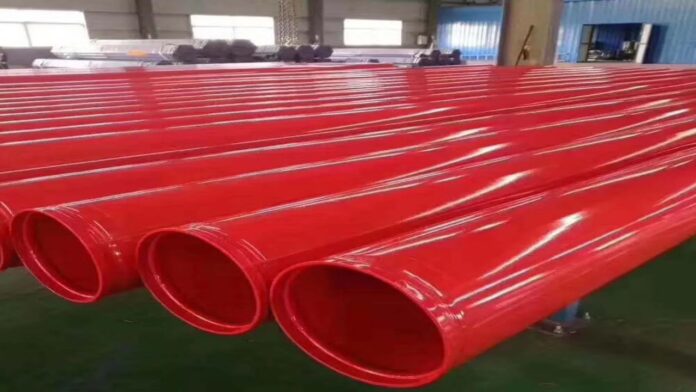
Choosing the right fire pipe for your needs is a critical decision that can significantly impact the safety and efficiency of your fire suppression system. This guide will help you navigate the process of selecting the ideal ASTM A135 fire pipe for your specific needs.
Fire pipes are an integral part of any fire suppression system. They serve as the conduit for water or other fire suppressant materials, ensuring they reach the areas where they are most needed during a fire. The ASTM A135 is a standard specification for electric-resistance-welded steel pipe, commonly used in fire protection systems due to its durability and reliability. However, selecting the right ASTM A135 fire pipe requires careful consideration of several factors.
Importance of Selecting the Right Fire Pipe
Choosing the right fire pipe is not just about meeting building codes and regulations. It’s about ensuring the safety of your building and its occupants. The right fire pipe can effectively deliver the necessary fire suppressant to extinguish a fire quickly, minimizing damage and potentially saving lives. Conversely, the wrong pipe could lead to system failure, resulting in catastrophic consequences.
Factors to Consider When Choosing ASTM A135 Fire Pipe
Material Composition and Quality
The ASTM A135 fire pipe is made of electric-resistance-welded steel, known for its strength and durability. However, the quality of the material can vary. It’s crucial to ensure that the pipe you choose meets the ASTM A135 standard, indicating it has passed rigorous testing and quality control measures.
Size and Dimensions
The size and dimensions of the fire pipe should align with your system’s requirements. This includes the pipe’s diameter, wall thickness, and length. The right size ensures the pipe can handle the pressure and flow rate of your fire suppression system without risk of failure.
Coating and Corrosion Resistance
Fire pipes are often exposed to harsh conditions, including high temperatures and corrosive materials. Therefore, it’s essential to choose a pipe with a robust coating that can resist corrosion and withstand extreme conditions. The ASTM A135 fire pipe typically comes with a black or hot-dip galvanized coating, both offering excellent corrosion resistance.
Compatibility with Fire Suppression Systems
The fire pipe you choose must be compatible with your fire suppression system. This includes compatibility with the type of fire suppressant used (water, foam, etc.), the system’s pressure and flow rate, and the connection types required for installation.
Understanding Your Specific Requirements
Before making a decision, it’s crucial to understand your specific needs. This includes the type of building, its size, the potential fire hazards present, and the local fire codes and regulations. These factors will influence the type, size, and quality of fire pipe you need.
Researching and Comparing Options
Once you have a clear understanding of your needs, it’s time to research and compare your options. Look for reputable manufacturers and suppliers, read product reviews, and compare prices. Don’t forget to consider factors like delivery times and after-sales service.
Seeking Expert Advice if Needed
If you’re unsure about any aspect of choosing a fire pipe, don’t hesitate to seek expert advice. Professionals in the field can provide valuable insights and recommendations based on their experience and expertise.
Conclusion and Final Tips for Selecting the Ideal Fire Pipe
Choosing the right ASTM A135 fire pipe is a critical task that requires careful consideration and research. By understanding your specific needs, considering key factors, and seeking expert advice if needed, you can select the ideal fire pipe for your fire suppression system, ensuring safety and efficiency.
Remember, the right fire pipe is not just about meeting regulations – it’s about protecting your property and the people within it. So, take your time, do your research, and make the right choice.





